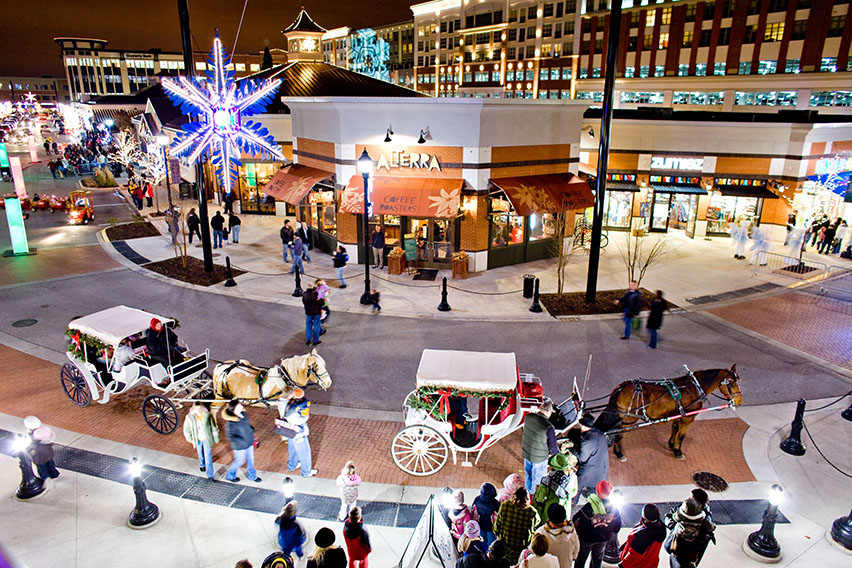By: Yaromir Steiner
For a large number of retail and mixed-use projects around the country—and for the communities they serve—the public-private partnership has been a game-changer. In fact, it’s safe to say that a significant percentage of the country’s most ambitious, successful and transformative projects would never have happened without collaborative financing structures.
What is interesting (and encouraging) is the degree to which this important tool has become more sophisticated and flexible in recent years. Public-private financing agreements were once focused primarily on site and project basics: addressing engineering issues and upgrading civic infrastructure. Today, however, many of the innovative and creative public-private financing agreements are designed to do much more than just build a new road, improve a sewer system or add a new traffic light.
Just to be clear, this shift is not about the financing specifics—there will always be financial details and legislative strategies that dictate what is possible and how these agreements can be structured. I am much less interested in the mechanics of how they work than I am in the philosophy behind why they are being used more often and to great effect.
Think local
One of the dynamics driving the evolution is a significant shift in both the acceptance and aptitude of local governments, who have become increasingly open to, and enthusiastic about, leveraging public-private partnerships. Not long ago, developers were spending countless hours educating and lobbying public officials, municipalities and residents on the value of these relationships. At that time, these misunderstood agreements were viewed as unnecessary and excessive incentives. Today, however, as civic leaders explore ways to unlock the potential and remake their communities, educated officials have quickly become advocates of, and proponents for, these valuable vehicles.
In Glendale, Wisconsin (Milwaukee), where a 50-year-old retail mall was on its last legs, the City of Glendale was concerned about losing their historic tax base and sacrificing the commercial center of their community to nondescript strip-center or big box anchored retail. Civic leaders stepped up and contributed more than $60 million and were critically important in making the $280 million, mixed use Bayshore Town Center a reality. Featuring an outstanding mix of retail, restaurants luxury apartments and offices, the 1.3 million square foot project not only gave new life to Glendale’s commercial hub, it also solved existing traffic problems and resolved a major environmental problem (the original mall was built on an old landfill that had not been dealt with properly). Without the City of Glendale this project would never have happened.
A “win-win”
I get calls monthly from mayors and civic leaders from both small towns and large communities around the country seeking new ways to create public spaces and reenergize community centers. Perhaps more than anything else, this speaks to how profoundly the landscape has changed. Municipalities are now actively pursuing developers. Today there are many examples of private projects that have successfully leveraged innovative and mutually beneficial public partnerships to revitalize communities and create the kind of memorable spaces and places that serve as true destinations. Municipalities want more than just shopping centers, they want community centers: iconic town squares and bustling main streets where social and commercial potential can become reality. And, they have realized that they possess a powerful and flexible tool that can help make that happen.
Even when public and private interests are aligned, this does not necessarily mean that money is given easily. In most cases, tough negotiations take place in order to limit the exposure of the taxpayer, while providing some structure to developers that is compatible with the financial markets funding the project.
An engaged partner
The integral and reciprocal connections between economic development, quality of life, a strong and diverse workforce, and outstanding facilities and resources are clear. Smart communities understand those dynamics and are willing to share in both the risks and rewards while working closely with an experienced development partner. They are more sophisticated than ever before. They expect great clarity and transparency. They want to be a part of the planning and approval process. And most importantly, they want to ensure that the vision for your project is consistent with the vision of the greater community. The good news is that the process has become much more coordinated and collaborative as a result.
At Liberty Center in Northern Cincinnati, Ohio, a community generated planning document was already in place that had a proposed town center in the exact location where the new center would be built. Consequently, our project was totally aligned with the objectives of the community, a factor that helped facilitate an overall investment of more than $360 million—$40 million of which came from public sources.
The bottom line is that what was once a strategy borne strictly out of financial necessity and the desire to make the numbers work has become a strategic development tool for developers and municipalities alike: a critically important tool for facilitating some of the industry’s most creative and exciting new projects.






